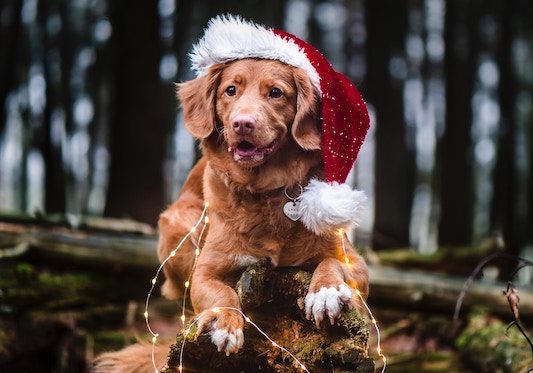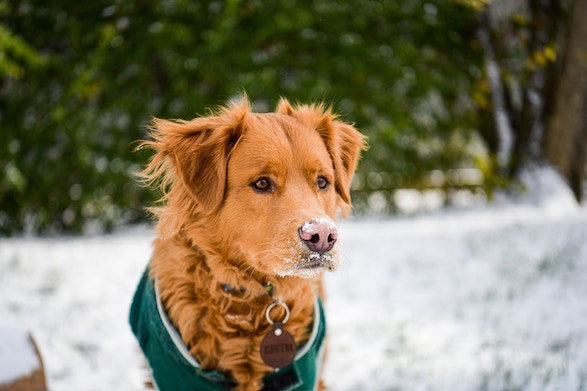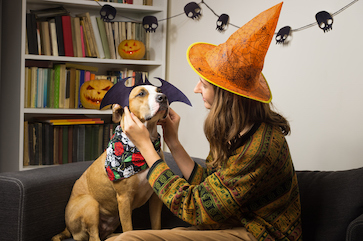A reliable recall is an essential skill in the dog ownership world. Whether it’s coming back into the house from the backyard or calling your dog when they accidentally slip out of the front door – you need them to respond! Building this command on a solid foundation is essential so you can shape your dog to respond the first time, every time. We will cover step-by-step, how to teach your puppy to “come when called” and maintain that behavior throughout their life to ensure they grow into an attentive, well-mannered dog.
Recommended Equipment:
- Secure collar (e.g. martingale collar)
- Long training line ( 30 ft for small dogs and 50 ft for medium to large dogs)
- Treat bag
- Food and treats
You can find these supplies, and more, on our Puppy Supply List.
Once you get the basics of the recall command down, all that’s left to do is generalize locations. Just because your puppy responds to their name every time you call them in your backyard doesn’t mean they will listen at a busy park. You can set your puppy up for the most success by starting in an environment with little to no distractions.
The basics of the recall command
We recommend starting in a large, open room of your home and following these steps:
- Stand right next to your puppy. When they aren’t looking at you, say their name one time. The clearer you can be, the better.
- As soon as they turn to look at you, mark that behavior with a word (e.g. “good!”, or “yes!”) and feed them. Repeat this 3-4 times.
- Stand 1-2 feet away from your puppy and say their name one time. Say your preferred marker work as soon as they make eye contact with you and feed them. Repeat 3-4 times.
- Stand 4-5 feet away from your puppy. Say their name one time and make sure it is always loud enough for them to hear. Mark the behavior as usual, but this time hold a piece of food or treat between your thumb and forefinger. Squat and hold your hand out in front of your puppy’s nose. Make a “J” shape down in front of you and back up the length of your body. This should lure your puppy into an automatic sit.
- Once your puppy’s bottom is on the ground, gently grab their collar with your free hand. While still holding onto their collar, feed them the piece of food or treat with your other hand.
- Bring both hands away at the same time. Use your puppy’s release word (e.g. “okay,” “free”). Repeat steps 4-6 an additional 3-4 times.
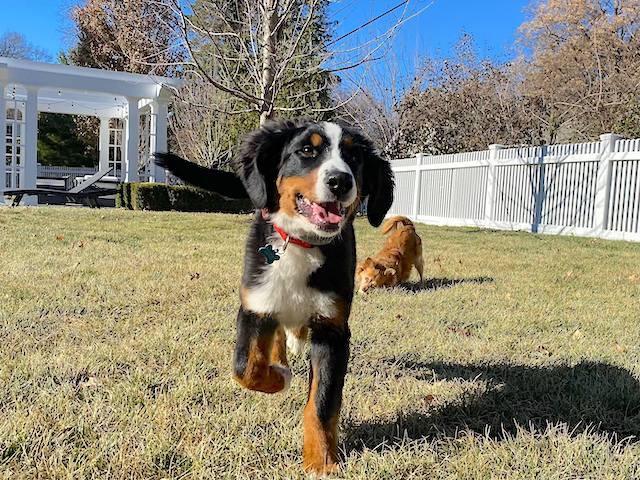
Next steps to train your puppy to come when called
Now you’re ready to use the long line to generalize the behavior! When you feel like your puppy responds reliably to their name inside, attach the long line and head outside to the backyard. You should still use the long training line regardless of your backyard being fenced-in for safety.
- Let your puppy wander 5-10 feet away from you while you hold the long line loosely in your hand. Call their name loudly enough that your puppy can hear you.
- The moment they turn and make eye contact with you, use your marker word and praise excitedly. Walk or jog a few steps back to capitaze on their desire to get to you.
- Once they are close, extend your hand and lure them into a sit directly centered in front of you.
- With your puppy’s bottom on the ground, grab their collar with one hand and with your other hand, drop the long line and feed them a treat.
- Pick the long line back up, let go of their collar, and release them. Repeat this process at least 8-12 times each time you practice.
As you get in more repetitions, move to different areas of the yard and vary the distance between you and your puppy each time. Your goal is to slowly increase it. If your puppy is distracted by something (i.e. a squirrel, a neighbor dog barking), stand closer to them to set them up for success and make it easier for them. Work on increasing the distance between you and your puppy up to 10 feet, then 20, and eventually 30 feet or more! It will be especially important for you to practice standing near or inside the back door that leads back into the house.
We recommend that when you call your puppy inside from the backyard, approximately 20% of the time you should keep them inside and 80% of the time release them back into the yard. This will decrease the likelihood of your dog playing chase in the backyard and avoiding going back inside when it’s bedtime or you need to go to work.
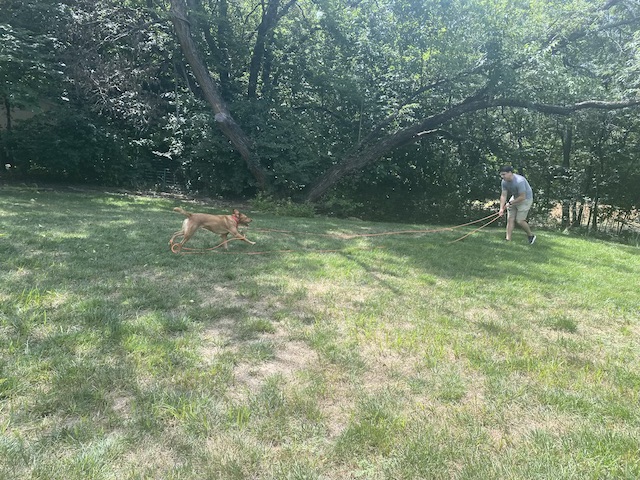
The 3 D’s of training
The final step in creating a strong recall command is practicing it in areas outside of the home and backyard. When you do this, always bring treats and use the long training line. Practice in your front yard, around your front door, and at your favorite local parks. The key to success is to start simple and slowly increase difficulty as your dog does well.
Keep the 3 D’s of training in mind: distance, duration, and distractions. Focus on one at a time. As your dog’s recall remains reliable, you can mix and match them to add a little more challenge!
- Distance – how much space is between you and your dog or how much space is between your dog and other stimuli. Start out standing near your dog and far from other stimuli (e.g. people, dogs, squirrels). To increase difficulty, stand farther away from your dog (never letting go of the long line) or let your dog get a little closer to the stimuli. If they fail and you want to decrease difficulty, stand closer to your dog or gently pull your dog back a few feet from the stimuli and try again.
- Duration – how much time between trials of coming when called. Start out by calling your puppy again only a few seconds after you release them. To increase difficulty, wait longer between trials so your puppy is more likely to get distracted. To decrease difficulty, shorten the time between repetitions again.
- Distractions – stimuli in the environment or events happening while training. These could be anything from a person and their dog walking by, a squirrel running down from a tree, a group of kids playing tag, etc. Start out in a location with little to no distractions – even being at a new, but empty park will have a lot of enticing smells. To increase difficulty, allow your puppy to observe or engage with the distraction longer (e.g. sniff for a couple extra seconds, walk a few feet closer to the families playing on the playground). To decrease difficulty, create distance between your dog and the distraction, or don’t let them observe for as long.
With enough practice, your puppy will age into a dog that comes every time on or off-leash. This will only happen if you call them using the “come” command, you reinforce their response with a treat and the long line every time. Training should be both work and fun for you and your dog.
Not only will they enjoy that time with you, but it serves as both mental and physical stimulation for them. If you feel like your dog is not listening or not enjoying themselves, take a break! Just like people, puppies need breaks too. You can break up repetitions by offering water, laying down and relaxing, or playing with their favorite toy.
If you want more tips for coming when called or are looking for more personalized one-on-one training, reach out today! Our professional dog trainers are more than certified to get you the high-level obedience you’re looking for.

